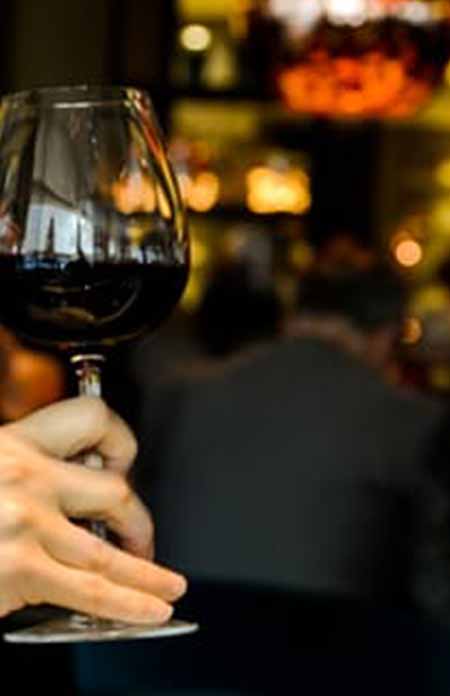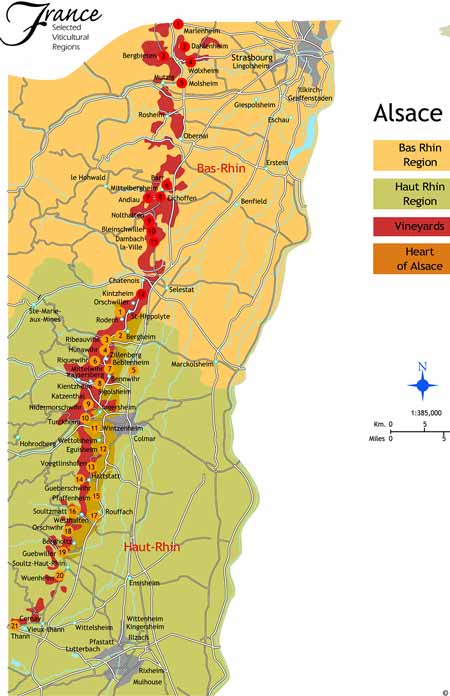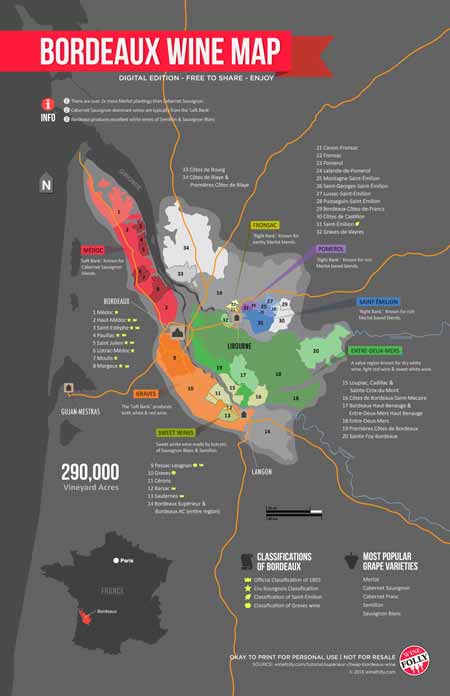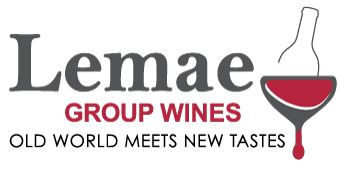
France's Wine History
It would be impossible to think of wine without thinking of France. France continues to supply more great wine, and in greater variety, than any other country on earth. Renowned wine names like “Burgundy”, “Pinot Noir” and “Champagne” originated there.
The key to France’s eminent position in the wine world is its geography. Its rich variety of soils (especially limestone “calcaire” that is so critical to wine quality and which France has in abundance) certainly plays a part. Also, France’s position between the Atlantic Ocean and the Mediterranean Sea provides a most suitable climate for growing a variety of wine grapes.

Modern wine history started with the Greeks and the Phoenicians around 1100 B.C. Yet, it was the French, Italians and Spanish who took the art of winemaking and ran with it! The Greeks planted vineyards in what is now Bordeaux; Roman merchants used wine-boats to ship wines from Bordeaux and Burgundy. Thus, the foundations were laid for the French wine industry as we know it today.
Up to the beginning of the 17th century, wine occupied a most enviable position in the world – unlike water it was the one and only wholesome beverage that could be stored for some limited amount of time. All this changed in the mid-17th century with the invention of three key items: the glass bottle, the cork to seal it, and, of course, the corkscrew to open the corked bottle! Wine kept in a tightly corked bottle lasted much longer than in an oaken barrel. Also, corked wine aged differently, acquiring that wonderful “bouquet” that we smell today when we open a bottle of wine.
France not only has an abundance of good vineyards, but it also is more experienced at controlling, classifying and defining wines than any other wine-producing locale. The AOC system was created by the French government to grant select areas official status for their wines, due to the specific terrior and soil of the area. France’s wines are classified into three categories, in order of highest quality to lowest quality, as follows:
- Appellation d’Origine Contrôlée (AOC) – wines that are precisely regulated – from their geography, to the varietals that are used to produce them, to the methods used to produce them. Generally the most traditional and best wines.
- Indication Géographique Protégée (IGP) – indicated wines that are excellent in quality; The IGP denomination is gradually replacing the traditional “Vin de Pays” designation. IGP wines usually come from larger (than those of AOC wines) growing areas, where higher yields are allowed.
- Vin or Vin de France -- the most basic classification of French wine; replacing the traditional “Vine de Table” designation. This wine’s vintage and variety are allowed to be stated on the labels of the wines.
France’s Alsace Wine Region
Alsace, located in the far northeastern corner of France, stands out from any other French wine region, thanks to its strong Franco-Germanic influences. The region lies between the Vosges Mountains and the French border with Germany, marked by the Rhine River.
Alsace is the only French wine region to grow significant quantities of Riesling and Gewurztraminer, which are more commonly associated with German wines – this is a nod to Alsace’s history, and a result of the region having switched back and forth between German and French control over the centuries. Muscat is also a traditional Alsace grape varietal. White varietal wines make up 90% of production here. Aromatic and balanced with impressive acidity and structure, these wines are remarkably food friendly.

Although significantly outnumbered by white wines, red wines are also made here, mostly from Pinot Noir grapes. Alsace Pinot Noirs are usually lighter-bodies and more rustic than those produced in Pinot Noir’s homeland, the famous Burgundy region.
Alsace’s wines are produced under three key appellations: Alsace and Alsace Grand Cru for white wines (both sweet and dry), and Crémant d’Alsace for sparkling.
France’s Bordeaux Wine Region
Bordeaux, simply put, is perhaps the largest fine-wine district in the world. The region produces about 6 million hectares (nearly 15 million acres!) of wine annually, easily dwarfing that of all other French wine regions with the exception of the Languedoc-Roussillon region. In Bordeaux, red wines outnumber white wines by a factor of nine to one. In fact, the first Cabernet Sauvignon and Merlot vines originated in Bordeaux!
Bordeaux reds are typically medium- to full-bodied, with bold aromas of black current and plums. When you taste these wines, they speak of mineral and fruit notes from savory, mouth-drying tannins. These reds are usually suitable to be aged for years, often for several decades. Red Bordeaux blends are some of the most copied wines on earth, and include Cabernet Sauvignon, Merlot, Cabernet Franc, Petit Verdot and Malbec. Beautifully labeled, Bordeaux wines have an elegant look at table. Red Bordeaux wines are best served just below room temperature (around 65°F), and should be decanted prior to drinking. Red Bordeaux wines pair well with red meats (from steaks to pot roast!), pork, duck and dark meat turkey, as well as Swiss and provolone cheeses. They also pair well with dishes containing roast potatoes, lentils, mushrooms, onions and green beans.

